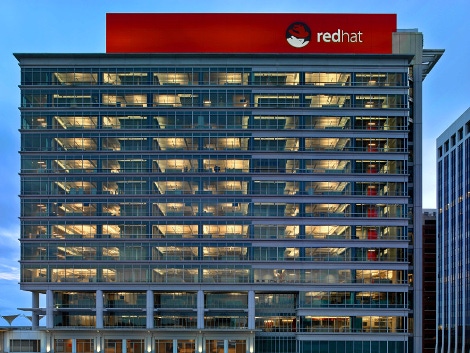Red Hat Bets Data Centers are Ready for ARM ServersRed Hat Bets Data Centers are Ready for ARM Servers
Unveils flagship enterprise Linux distribution for x86 alternative
November 15, 2017

Red Hat announced this week it's ready for any boom of ARM on servers utilizing the promising 64-bit ARMv8-A server-optimized Systems on Chip for cloud, telecom, edge, and high-performance computing applications. Red Hat Enterprise Linux is now available and fully supported on ARM.
With the announcement, Red Hat joins Linux distributions SUSE and Ubuntu, both of which already support ARM with their server editions. However, it's not really late to the fair. The company has been actively working on an ARM version of RHEL for a while, having released its first "development preview" for the architecture in 2015.
The public clouds have also been getting on the ARM bandwagon.
In March, Microsoft announced at the Open Compute Summit that it's been working with ARM chip makers Cavium and Qualcomm on ARM server designs for possible Azure deployment. Redmond has already ported Windows Server 2016 to ARM and envisions the architecture eventually accounting for half of its server usage, primarily for cloud storage, big data, machine learning, search, index, and other workloads.
Last week, in collaboration with Microsoft, Cavium announced that it's contributing the specifications for its second-generation 64-bit ARMv8-A server motherboard, ThunderX2, to the Open Compute Project, effectively "open sourcing" the project and making it available for wide adoption.
Google has also reportedly been toying with ARM, working with Qualcomm to evaluate the 24-core ARM CPUs the chip maker announced in 2015 but didn't release until last week. The new chip, branded Centriq, is offered with up to 48 single-threaded cores with a speed of up to 2.6GHz. Google might already be a buyer. In February, Bloomberg reported that if Qualcomm's processors meet Alphabet's performance goals, it would commit to using them.
So why all the interest in ARM as a server architecture? Mainly because it's now ready for prime time and offers some advantages that make it a compliment to work alongside x86.
"The ARM ecosystem has emerged over the last several years with server-optimized SoC (system on chip) products that are designed for cloud and hyperscale, telco and edge computing, as well as high-performance computing applications," Red Hat explained in a statement. "Arm SoC designs take advantage of advances in CPU technology, system-level hardware, and packaging to offer additional choices to customers looking for tightly integrated hardware solutions."
Red Hat seems to be on the way to recommending ARM as an alternative to x86 in the data center -- as soon as it has tweaked its stack to run well on the architecture.
When asked when Red Hat offerings such as JBoss might be available for ARM, Jon Masters, Red Hat's chief ARM architect, told Data Center Knowledge, "Technically, these layered products won't require much architecture-specific porting, due to Java being independent of the architecture. However, there would be work to quality engineer. While I am not able to share the specific road map, we invested in the initial port of Java to ARMv8 in order to make this easier."
It also doesn't appear there will be a shortage of ARM servers on which to run the ARM-ready operating systems that are now available. Hewlett Packard Enterprise, Dell EMC, Lenovo, and Cray have ARM-based systems at the ready or in the works, and on Monday HPE unveiled Apollo 70, its first ARM-based HPC system.
While the public clouds are interested in ARM primarily as a way to diversify the microprocessor supply chain and reduce their dependence on Intel and AMD, Red Hat and server OEM's are hoping that with ARM's performance levels now somewhat competitive with x86, data center operators will be attracted to ARM's lower operational costs. In many cases ARM-powered microservers reportedly drop electricity use by at least half over x86 counterparts.
About the Author
You May Also Like







